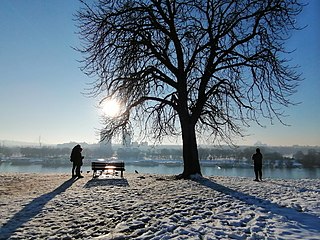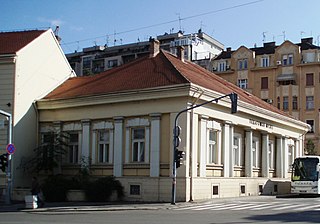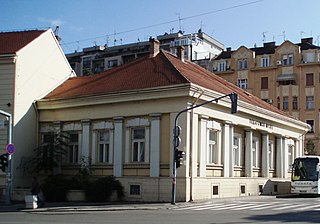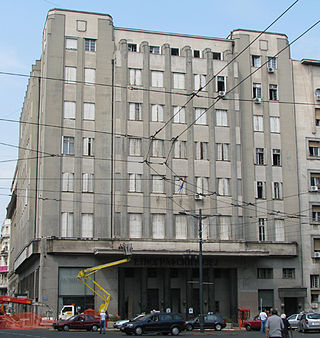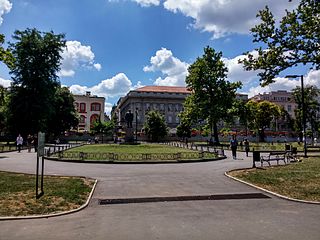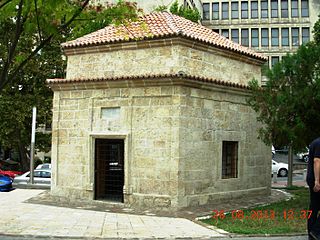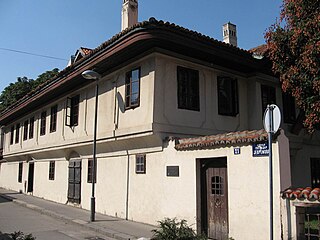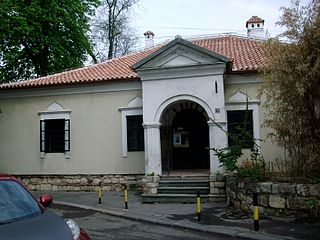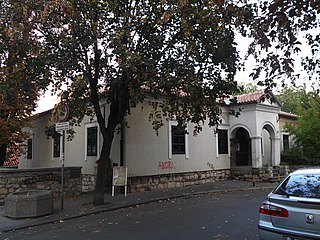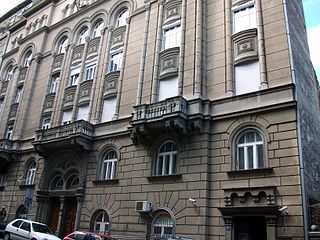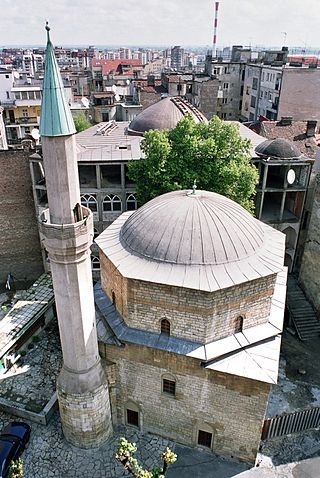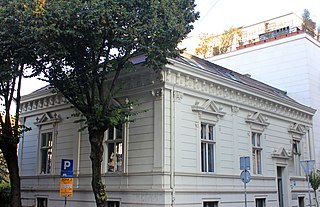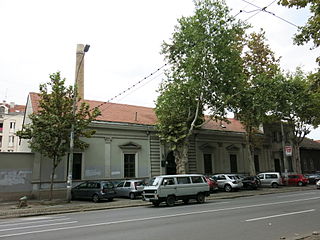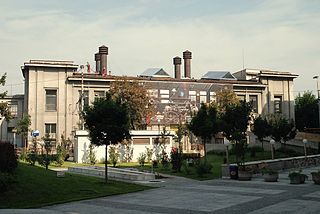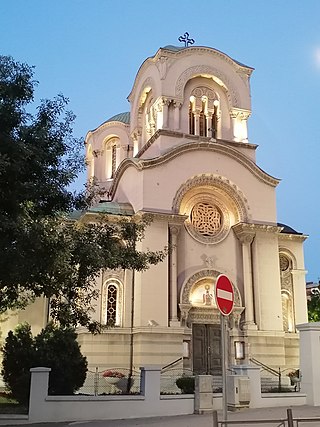Self-guided Sightseeing Tour #4 in Belgrade, Serbia
Legend
Guided Free Walking Tours
Book free guided walking tours in Belgrade.
Guided Sightseeing Tours
Book guided sightseeing tours and activities in Belgrade.
Tour Facts
2.5 km
75 m
Experience Belgrade in Serbia in a whole new way with our free self-guided sightseeing tour. This site not only offers you practical information and insider tips, but also a rich variety of activities and sights you shouldn't miss. Whether you love art and culture, want to explore historical sites or simply want to experience the vibrant atmosphere of a lively city - you'll find everything you need for your personal adventure here.
Activities in BelgradeIndividual Sights in BelgradeSight 1: Kalemegdan
Get Ticket*The Kalemegdan Park, or simply Kalemegdan is the largest park and the most important historical monument in Belgrade. It is located on a 125-metre-high (410 ft) cliff, at the junction of the River Sava and the Danube.
Sight 2: Зграда Реалке
The Realka High School Building is at the corner of 14 Uzun Mirkova Street and Tadeuša Košćuška Street, built between 1835 and 1840 in the style of classicism, most probably after the design of Franc Janke. Its social and historical value lies in the importance it had as the school building which attended and in which taught many important persons of 19th-century Serbia: the teachers Stevan Todorović, Todor Mijušković, Petar Ubavkić, Mihajlo Valtrović, Đorđe Krstić, and students Kosta Glavinić, Milan Kapetanović, Svetozar Jovanović, Milorad Ruvidić, Danilo Vladisavljević, Nikola Nestorović...The building was named after the Belgrade Realka, located within it for a long time. The oldest preserved building in Belgrade was built in European style and is a unique example of classicism.
Wikipedia: Realka High School Building (EN), Heritage Website
Sight 3: Pedagogical Museum
The Pedagogical Museum in Belgrade was founded on November 24, 1896 and is one of the oldest museum institutions in Serbia. It was founded by the Teachers' Association of Serbia with the task of collecting and preserving teaching aids and everything else that has pedagogical and historical value for primary schools and teachers. Since 1969, it has been located in the building of Belgrade's Realka in the immediate vicinity of Kalemegdan, at 14 Uzun Mirkova Street.
Sight 4: Ethnographic Museum
The Ethnographic Museum is a museum located in Belgrade, the capital of Serbia. It is one of the oldest museums in the Balkans. The Ethnographic Museum in Belgrade fulfills its mission together with the efforts of various stakeholders in the domain of presentation, revitalization and development of crafts in Serbia.
Wikipedia: Ethnographic Museum, Belgrade (EN), Website, Heritage Website
Sight 5: Academy Park
Academic Park is a park in Belgrade, the capital of Serbia. It is situated in the neighborhood of Studentski Trg, in the downtown. It is located in Belgrade's municipality of Stari Grad. Built from 1886 to 1889, Academic Park is one of the oldest parks in Belgrade.
Sight 6: Sheikh Mustafa's Türbe
Sheikh Mustafino turbe is a turbe (mausoleum) in Višnjićeva Street in Belgrade. It was built in 1783 and was part of the tekke. The shape of the turbet dates back to pre-Islamic times and is reminiscent of a tent of that time. Sheikh Mustafa is a dervish who is buried in a turbet.
Sight 7: Museum of Vuk and Dositej
The Museum of Vuk and Dositej is one of the most important memorial museums in Belgrade, the capital of Serbia. Founded in 1949, it depicts the life, work and legacy of Vuk Stefanović Karadžić (1787–1864), the reformer of the Serbian language, and Dositej Obradović (1742–1811), a writer who was the country's first Minister of Education. The museum is a crucial site for understanding the revival of Serbian culture at the time of the First Serbian Uprising against the Ottoman Empire. Since 1979, this institution has been governed by the National Museum of Serbia.
Sight 8: Музеј позоришне уметности
The Museum of Theatre Art of Serbia follows the historical and contemporary development of theatre art in Serbia. Its main task is to collect, study and exhibit material that is important for the development of theatrical art. It is in possession of a rich collection consisting of archival materials and manuscripts, art objects, photographs, stage material and other objects related to the theater and its development in Serbia. There is also a rich library within the museum.
Sight 9: Божићева кућа у Београду
The Božić family house is located in Belgrade, at 19 Gospodar Jevremova Street. Today, this house represents a cultural monument of great importance for Serbia.
Sight 10: Jewish Historical Museum
The Jewish Historical Museum is a museum located to the southeast of Kalemegdan, Stari Grad, Belgrade. Founded in 1948, it is the only Jewish museum in Serbia. The museum is situated in a building constructed in 1928 for the Sefardic community. The museum's collection is comprehensive and also complex in its content, with exhibits arranged thematically.
Sight 11: Bajrakli Mosque
Get Ticket*The Bajrakli Mosque is a mosque in Belgrade, the capital of Serbia. It is located in Gospodar Jevremova Street in the neighbourhood of Dorćol. It was built around 1575, and is the only mosque in the city out of the 273 that had existed during the time of the Ottoman Empire's rule of Serbia.
Sight 12: Кућа књижара Марка Марковића
Marko Markovic's bookstore is located in the municipality of Stari Grad, at 45a Gospodar Jovanova Street in Belgrade. It is included in the Cultural Monument of Serbia.
Wikipedia: Кућа књижара Марка Марковића (SR), Heritage Website
Sight 13: Krsmanovic Brothers' Steam Bath
The Steam Bath of Brothers Krsmanović is the former public bath in Belgrade, the capital of Serbia. Built from 1901 to the 1920s around the former Turkish bath from the 18th century, it was the last operational public bath in Belgrade, until it was closed in 2004. In 2001 the edifice was declared a cultural monument. The first public swimming pool in Belgrade was opened in the venue in 1904.
Wikipedia: Steam Bath of the Brothers Krsmanović (EN), Heritage Website
Sight 14: Science & Technology Museum
The Belgrade Museum of Science and Technology was founded on October 6, 1989. Since 2005, it has been located in the building of the old thermal power plant in Dorćol, at 51 Skender-begova Street.
Sight 15: Church of Saint Alexander of Neva
The Church of St. Alexander Nevsky in Belgrade is a Serbian Orthodox church founded in 1877 by Jelisaveta Načić. It belongs to the Archdiocese of Belgrade-Karlovac of the Serbian Orthodox Church. The dean of the church is presbyter Stevan Vukić.
Wikipedia: Црква Светог Александра Невског (SR), Heritage Website
Share
How likely are you to recommend us?
Disclaimer Please be aware of your surroundings and do not enter private property. We are not liable for any damages that occur during the tours.
GPX-Download For navigation apps and GPS devices you can download the tour as a GPX file.
